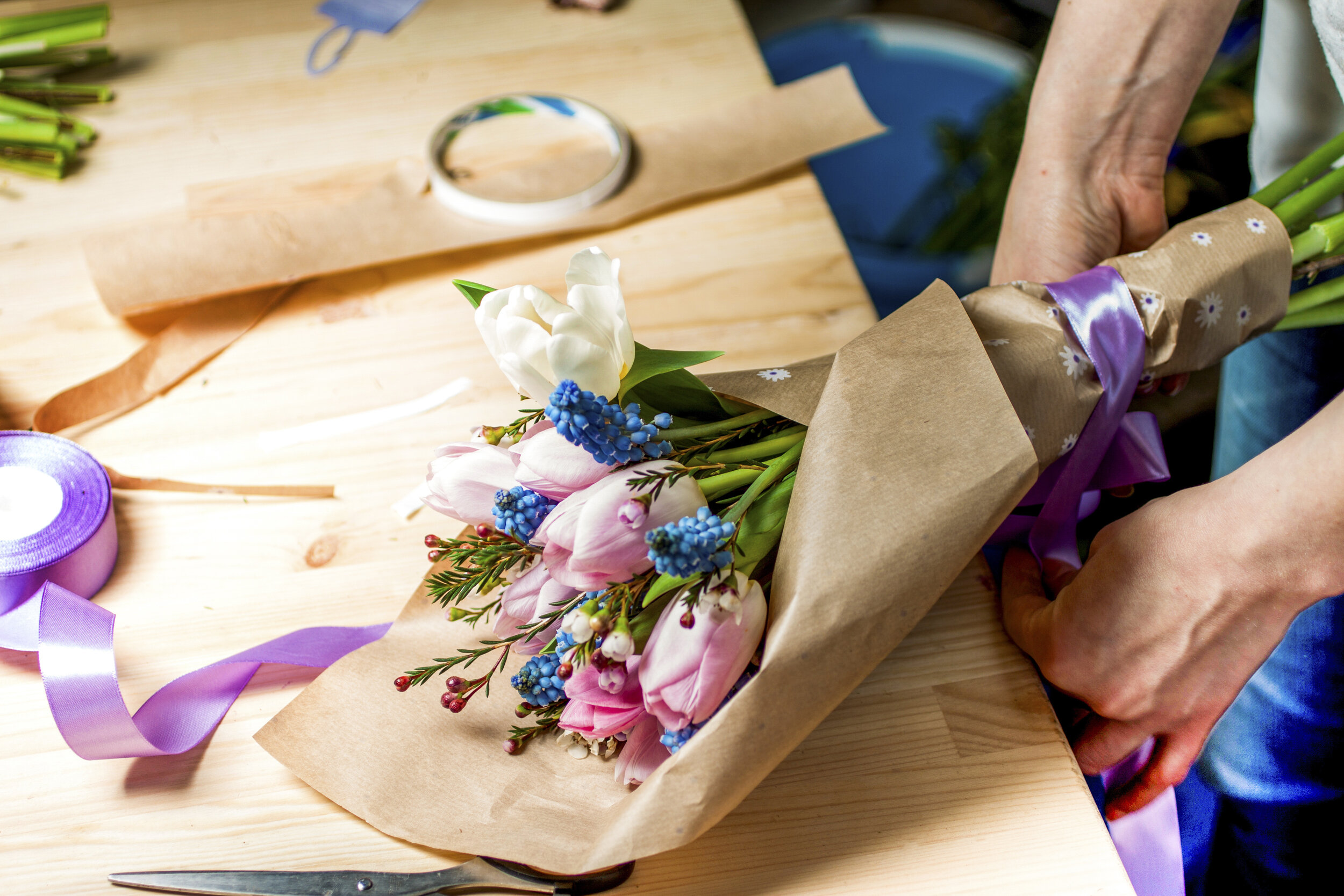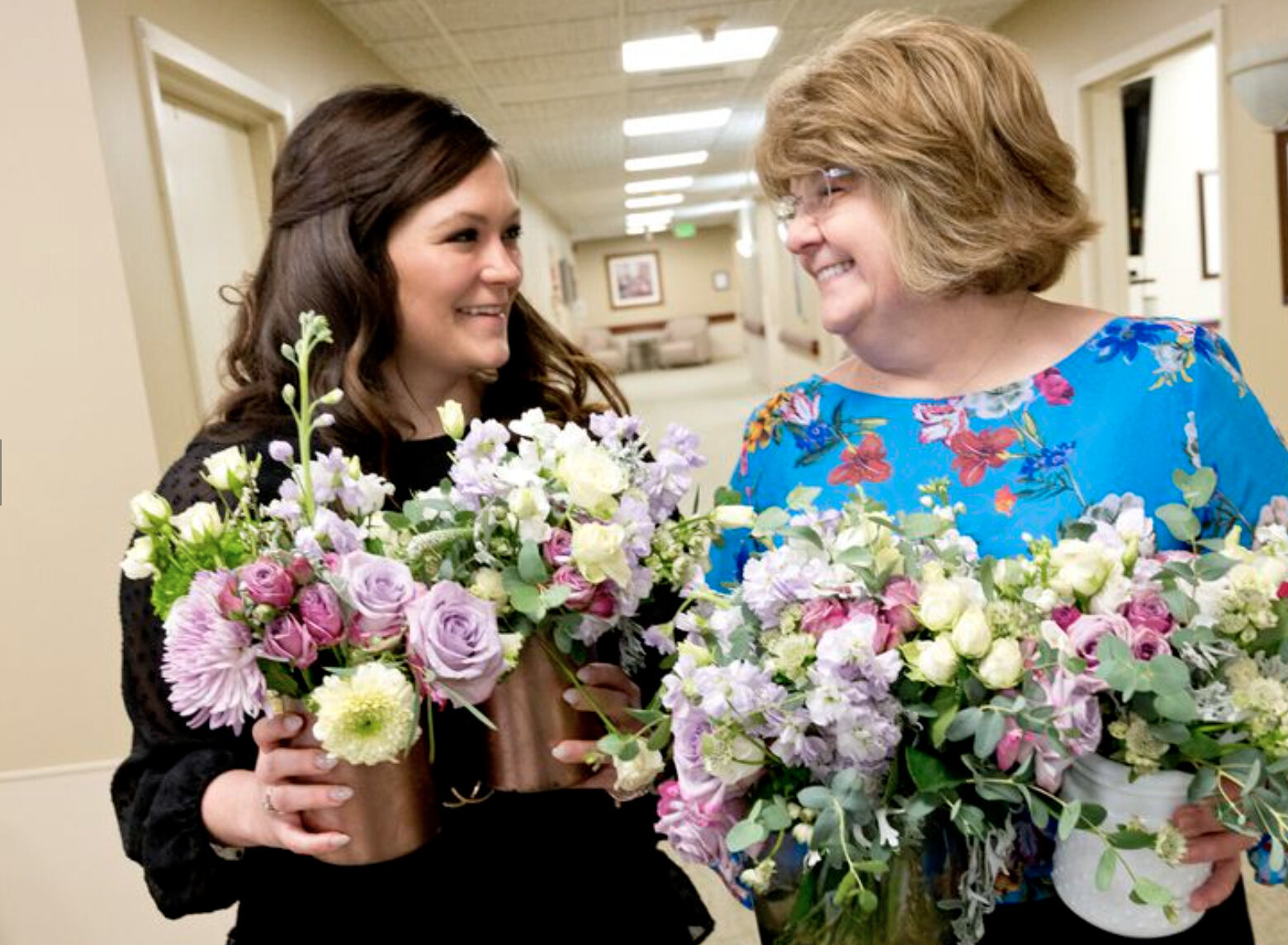9 Ways to Make Your Floral Business More Sustainable
How to do you incorporate sustainability into your floral business? As beautiful as flowers are, there is no denying that they can significantly impact the environment. According to Scientific American, a 2007 study found that 12,000 Kenyan roses resulted in 13,200 pounds of CO2 while Dutch roses emitted 77,150 pounds of CO2.
There are even estimates that Valentine’s Day roses alone require 9,000 metric tons of CO2. In addition to high carbon footprints from international shipping, other byproducts of the floral industry such as pesticides, single-use plastics, floral waste, and water waste take a toll on our planet.
Build a Sustainable Floral Business That’s Eco-Friendly
So, what’s a florist to do? As more and more businesses and consumers strive to become eco-friendly, now is the perfect time to incorporate sustainable practices into your floral business. Not only are these environmentally-minded changes beneficial to our planet, but they will help set your blooms apart!
Let’s dive in. Here are nine ways to make your floral business more sustainable.
1. Source Local In-Season Flowers
Do your best to incorporate locally grown in-season flowers into your arrangements.
Supporting local growers and flower farms is not only good for your community, but it also helps cut back emissions from overseas transportation. As much as possible, take into account the source of your blooms. Are they organic? Fair trade? Pesticide-free? Grown in a greenhouse?
While it is not always possible to source locally grown flowers, doing your best to incorporate them into your designs can have a considerable impact.
2. Chat With Your Clients
As florists, we know all about where our flowers are coming from and in what seasons they are most readily available.
If your clients are particularly eco-conscious or open to your ideas, don’t be afraid to suggest beautiful blooms grown closer to home.
Taking the time to discuss which of your offerings are eco-friendly is a great way to show off your insider knowledge while simultaneously helping your clients consider sustainable options.
3. Say No to Floral Foam
You may have already chosen to go foam-free, but if you are still incorporating floral foam into your designs, perhaps now is the time to consider alternatives.
Traditional floral foam is made of carcinogenic materials and is a single-use plastic. Floral foams also further break down into microplastics, which contaminate our water sources and are becoming an increasingly problematic form of pollution.
Alternatives like chicken wire, moss, wood wool, straw, and other elements help make the transition much easier.
4. Eliminate Plastics
Did you know that only 9% of plastics worldwide are actually recycled?
In addition to floral foam, plastics like cellophane, vases, buckets, floral pics, candle holders, spray bottles, and decorative add-ons can result in quite a lot of waste that often is not recycled.
Try eliminating all single-use plastics by searching for more sustainable options such as wrapping bouquets in paper and attaching cards with twine.
In instances where plastic is unavoidable, try your best to reuse these items as much as possible. When an item can no longer be reused, then be sure to recycle it properly.
5. Reuse and Recycle Vases
It’s safe to say that all of us have received a floral arrangement and ended up with a vase or two we didn’t need.
Take a walk in any thrift store, and you’re bound to find plenty of vases for sale. Get creative and offer your customers a unique vase recycling program!
You can give in-store credit for returned vases. You could even reuse these vases for future arrangements or as display pieces. Alternatively, encourage customers to bring their own vases they have on hand for their arrangements.
6. Add Houseplants to Your Offerings
If you haven’t already, adding houseplants to your inventory is a great way to diversify your business and also encourage sustainability.
After all, houseplants will continue to grow long after flowers have faded!
Houseplants, succulents, and terrariums are also on-trend, making the addition of these items a win-win. You may even attract some new customers while offering existing ones some exciting new options.
7. Compost Leftovers
Composting is an easy way to ensure that leftover flowers, greenery, and even your lunch scraps can properly break down into nutrient-rich soil.
If you live in an urban area or don’t have a garden to use the compost, see what local options are available to you. Many cities offer composting services or community composting.
If these services aren’t readily available, try partnering with a local farm, farmers’ market, or garden enthusiast. You can even consider encouraging clients to drop their old arrangements off to be composted in exchange for a small credit.
8. Repurpose and Donate Flowers
A great way to make any floral business more sustainable is repurposing flowers.
Whether you provide flowers for large-scale weddings and events or simply have extra blooms leftover at the end of the day, donating flowers to those in need is not only good for the community, but also good for the planet!
Find a floral repurposing service that you can partner with for events, or try connecting with a local hospital, nursing home, or homeless shelter. Why let beautiful blooms end up in a landfill when someone in need can still enjoy them?
9. Do a Trash Audit
A great way to see where your business can improve on sustainability is by doing a trash audit.
Check to see what items you are throwing away frequently, and see what you can do to decrease this waste. Are you always tossing receipts? Offer clients a paperless invoice. Are you finding plastic packaging everywhere? See if you can eliminate it at the source. Can you find eco-friendly alternatives for business-related items like cleaning products, business tools, or paper products?
Remember: Every Little Bit Helps
Making the transition to a more eco-friendly floral business can seem overwhelming. It is important to keep in mind that change doesn’t need to happen overnight.
Try making a list of small, manageable, sustainable goals to start. Once you’ve mastered these, you can work on more difficult, long term goals.
Over time, you’ll be amazed by how much waste you’ve eliminated and proud of the changes you’ve made to protect our planet!










